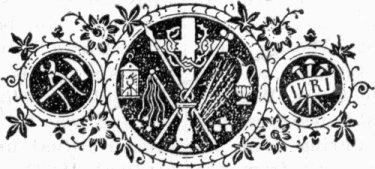Palm Sunday – The example so perfect that it transforms us
I’ve been under the gun lately because of various personal things and preparations for travel. Therefore, I am channeling my inner environmentalist activist and recycling something I wrote for my own blog, perhaps already known to you. Palm Sunday marks […]



I’ve been under the gun lately because of various personal things and preparations for travel. Therefore, I am channeling my inner environmentalist activist and recycling something I wrote for my own blog, perhaps already known to you.
Palm Sunday marks the beginning of Holy Week. Holy week includes the Sacred Triduum.
The principal ceremonies of the Palm Sunday Mass include the blessing of palm branches (or olive branches in some parts of the world, such as Rome) and a procession around and into the church. In the Novus Ordo Missale Romanum an interesting rubric about the procession harkens to ancient times:
At a suitable hour the “collect” is made (fit collecta) in a lesser church or in another appropriate place outside the church toward which the procession marches.
Here is our word “collect” used to describe a gathering of people.
Also in the rubrics there is something helpful for our understanding of “active participation”:
Then as is customary the priest greets the people; and then there is given a brief admonition, by which the faithful are invited to participate actively and consciously (actuose et conscie participandam) in this day’s celebration.
Those words actuose et conscie are very important. The Second Vatican Council, when using the term actuosa participatio or “active participation,” meant mainly interior participation, the engaging of the mind, heart and will. The Council Fathers did not mean primarily exterior participation. Exterior participation should be the natural result of interior participation: we seek to express outwardly what we are experiencing within. While the two influence each other, there is a logical priority to interior participation, which is by far the more important. You can be doing things, even reciting or singing, and have your mind be a thousand miles away. But focused attention, and careful listening, active reception of what is going on is far more challenging. It is precisely that active receptivity that produces authentic outward informed participation, rather than just going through the motions.
I digress.
At the end of the procession, when everyone is gathered in the church, the priest says the…
COLLECT (2002MR & 1962MR):
Omnipotens sempiterne Deus,
qui humano generi, ad imitandum humilitatis exemplum,
Salvatorem nostrum carnem sumere
et crucem subire fecisti,
concede propitius,
ut et patientiae ipsius habere documenta
et resurrectionis consortia mereamur.
The vocabulary of today’s Collect is incredibly complex. We can only scratch at a fraction of what is there.
Our prayer was in older editions of the Missale Romanum and, before them, in the Gelasian Sacramentary. In the Gelasian there is an extra helpful et: Salvatorem nostrum et carnem sumere, et crucem subire. Wonderfully alliterative! The editor of the Gelasian excludes a comma, which makes sense to me: qui humano generi_ad imitandum….
There may be a touch of St. Augustine’s (+430) influence in the prayer. In Augustine humilitatis appears with exemplum on close conjunction with documentum (ep. 194.3) and with documentum and patientiae in proximity to exemplum (en. ps. 29 en. 2.7). In the context of the Passion Augustine says: “Therefore, the Lord Himself, judge of the living and the dead, stands before a human judge (Pilate), offering us a decisive lesson of humility and patience (humilitatis et patientiae documentum), not defeated, but giving the soldier an example of how one wages war (pugnandi exemplum): …”
There are two words for “example” here: exemplum…documenta. These words appear together in numerous classical and patristic texts. Our startlingly useful Lewis & Short Dictionary informs us that our old friend exemplum means, “a sample for imitation, instruction, proof, a pattern, model, original, example….” Exemplum is a term in ancient rhetoric, an inseparable part of the warp and weft of the development of Christian doctrine during the first millennium.
For Fathers of the Church, all well-trained in rhetoric (how we need those skills today), exemplum identified a range of things including man as God’s image, Christ as a Teacher, and the content of prophecy. In Greek and Roman rhetoric and philosophy, an exemplum could have auctoritas, “authority,” the persuasive force of an argument. When we hear today’s prayer with ancient ears, exemplum is not merely an “example” to be followed: it indicates a past event with such authoritative force that it transforms him who imitates it.
Today we hear humilitatis exemplum, the authoritative model of humility who is Christ – Christ in action, or rather Christ in Passion, undergoing His sufferings for our sake. This becomes the foundational and authoritative pattern of the Christian experience: self-emptying in the Incarnation and Passion leading to resurrection. Exemplum is augmented later in the prayer by documenta. Documentum is also a “pattern for imitation” like exemplum but also in some contexts having the meaning of “a proof,” that is, a concrete demonstration that what is asserted is true: evidence. In this case it is a paradigm after which we are to pattern and shape our own lives. But this pattern or model itself actually has power to shape us.
Christ transforms us, the baptized who are made in his image and likeness, after his perfect exemplum, and who imitate His exempla and documenta, His words and deeds.
How important are the mighty transforming signs of our sacred liturgical worship! They inform and transform us. WE ARE OUR RITES!
 Consortium (from con-sors… having the same lot/fate/destiny with something or someone) classically is a “community of goods” and “fellowship, participation, society.”
Consortium (from con-sors… having the same lot/fate/destiny with something or someone) classically is a “community of goods” and “fellowship, participation, society.”
Habeo, habere has a vast entry in the L&S. The common meaning is “have,” but it also indicates concepts like “hold, account, esteem, consider, regard” as well as “have as a habit, peculiarity, or characteristic.” Habere is doing double-duty with two objects, documenta and consortia. This is why I use both “grasp” for the first application of habere and “have” for the second. The meanings of the two different objects draw our two different senses of habere.
Patientia is from patior, “to bear, support, undergo, suffer, endure,” and it carries all its connotations as well as the meaning “patience.” This is where the word “Passion” comes from. Today is Second Passion Sunday. We could say here, “examples of His long-suffering” or “exemplary patterns of His patient forbearance.” Finally, note that nostrum goes with Salvatorem and not with carnem: caro, carnis is feminine and the form would have to have been nostram carnem.
We have to stop and get into the…
SLAVISHLY LITERAL RENDERING:
Almighty eternal God,
who, for the human race,
made our Savior both assume flesh and undergo the Cross
for an example of humility to be imitated,
graciously grant,
that we may be worthy to grasp both the lessons of His forbearance
and also shares in the resurrection.
OBSOLETE ICEL:
Almighty, ever-living God,
you have given the human race Jesus Christ our Savior,
as a model of humility.
He fulfilled your will
by becoming man and giving his life on the cross.
Help us to bear witness to you
by following his example of suffering
and make us worthy to share in his resurrection.
CURRENT ICEL (2011):
Almighty ever-living God,
who as an example of humility for the human race to follow
caused our Savior to take flesh and submit to the Cross,
graciously grant that we may heed his lesson of patient suffering
and so merit a share in his Resurrection.
More can be said about that phrase patientiae ipsius. Ipse, a demonstrative pronoun, is emphatic and means “himself, herself, itself.” Could we personify patientia to mean, “grasp the lessons of Patience itself” or even “of Patience Himself”? That would be poetically sublime.
In the fullness of time the Second Person of the Trinity, God the Son, the eternal Word through whom all things visible and invisible were made, by the will of the Father emptied Himself of His glory and took our human nature up into an indestructible bond with His own divinity. He came to us sinners to save us from our sins and teach us who we are (cf. Gaudium et spes 22). This saving mission began with self-emptying (in Greek kenosis).
Fathom for a moment the humility of the Savior, emptying Himself of His divine splendor, submitting Himself to His humble and hidden life before His public ministry. When the time of His years and His mission was complete He gave Himself over again, emptying Himself yet again even to giving up His very life. Every moment of Jesus earthly life, every word and deed, are conditioned by humility. This is our perfect example to follow, an example so perfect that it has the power to transform us.
As Holy Week begins and the Sacred Triduum is observed, come to the sacramental observance of the sacred and saving mysteries with humble self-emptying. Make room for Christ.















